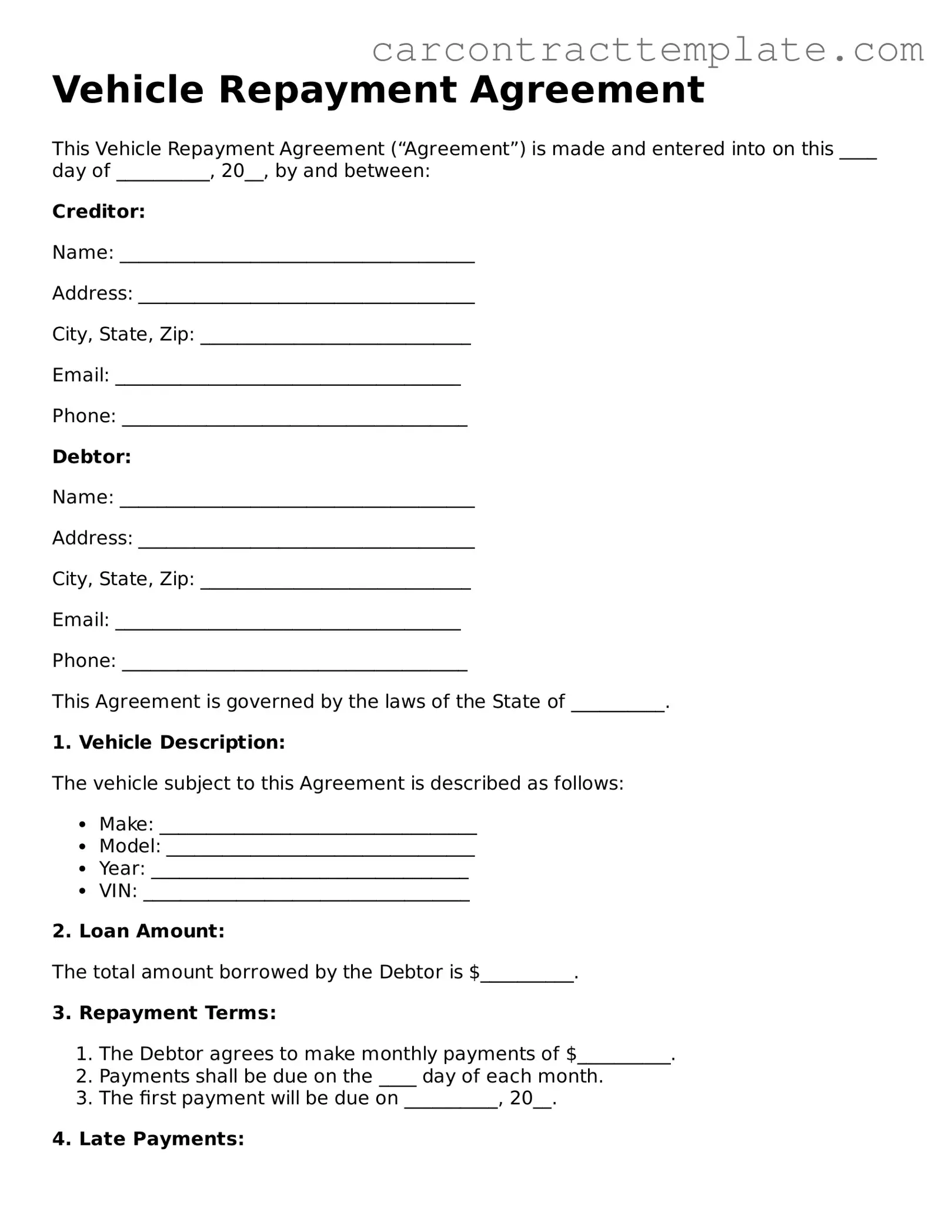Vehicle Repayment Agreement
This Vehicle Repayment Agreement (“Agreement”) is made and entered into on this ____ day of __________, 20__, by and between:
Creditor:
Name: ______________________________________
Address: ____________________________________
City, State, Zip: _____________________________
Email: _____________________________________
Phone: _____________________________________
Debtor:
Name: ______________________________________
Address: ____________________________________
City, State, Zip: _____________________________
Email: _____________________________________
Phone: _____________________________________
This Agreement is governed by the laws of the State of __________.
1. Vehicle Description:
The vehicle subject to this Agreement is described as follows:
- Make: __________________________________
- Model: _________________________________
- Year: __________________________________
- VIN: ___________________________________
2. Loan Amount:
The total amount borrowed by the Debtor is $__________.
3. Repayment Terms:
- The Debtor agrees to make monthly payments of $__________.
- Payments shall be due on the ____ day of each month.
- The first payment will be due on __________, 20__.
4. Late Payments:
If the Debtor fails to make a payment within _____ days of the due date, a late fee of $__________ will be charged.
5. Default:
If the Debtor defaults on this Agreement, the Creditor has the right to take possession of the vehicle without further notice.
6. Governing Law:
This Agreement will be governed by and construed in accordance with the laws of the State of __________.
IN WITNESS WHEREOF, the parties hereto have executed this Agreement as of the date first above written.
Creditor Signature: __________________________
Date: _______________________________________
Debtor Signature: __________________________
Date: _______________________________________
